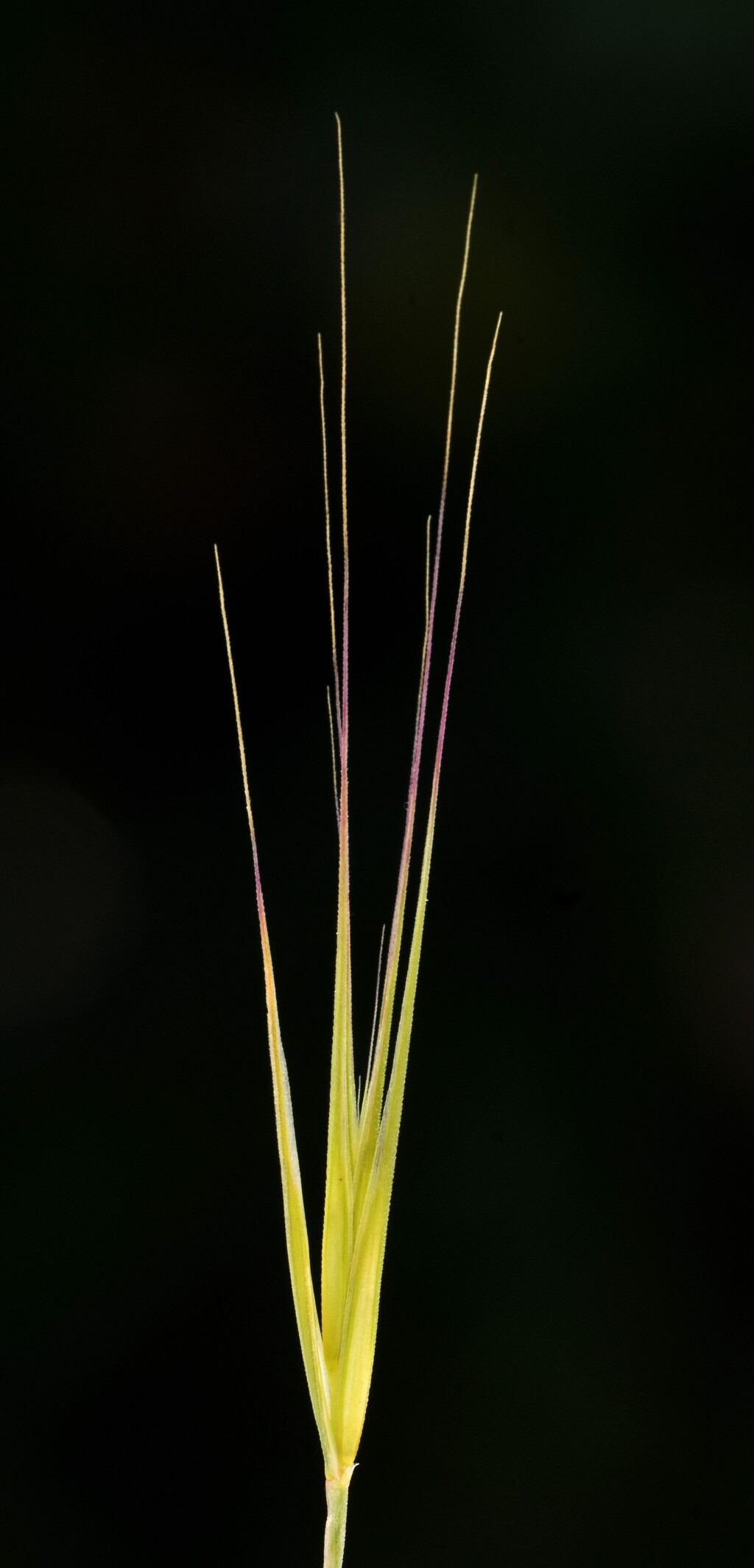Vulpia
Tufted annuals or, rarely, perennials. Leaf-sheaths glabrous or pubescent. Leaf-blades flat, inrolled when dry, glabrous or pubescent; ligules short, truncate, membranous. Inflorescence a panicle or rarely a raceme, usually more or less one-sided. Spikelets 3–12-flowered, laterally compressed; glumes unequal, the smaller, lower one 0–1-nerved, the upper 1–3-nerved, persistent; lemma 3–5-nerved, rounded dorsally, tapered gradually into a long, straight awn; palea subequal to body of lemma.
About 23 species, from temperate areas of Europe, Africa and the Americas; 5 naturalised in Australia, all in Victoria.
The relative lengths of the glumes can vary within an inflorescence. Cope & Gray (2009) point out that care must be taken to avoid measuring glumes from spikelets that are terminal on the inflorescence or branches as they tend to be atypical.
Molecular studies (e.g. Catalan et al. 2004) suggest this and some other genera (e.g. Lolium, Psilurus) are nested within Festuca but they are currently retained as distinct in Australia.
Walsh, N.G. (1994). Poaceae. In: Walsh, N.G.; Entwisle, T.J., Flora of Victoria Vol. 2, Ferns and Allied Plants, Conifers and Monocotyledons, pp. 356–627. Inkata Press, Melbourne.
 Spinning
SpinningCatalan, P.; Torrecilla, P.; Lopez Rodriguez, J.A.; Olmstead, R.G. (2004). Phylogeny of the festucoid grasses of subtribe Loliinae and allies (Poeae, Pooideae) inferred from ITS and trn L–F sequences.. Molecular Phylogenetics and Evolution 31: 517–541.
Cope, T.; Gray, A. (2009). Grasses of the British Isles. Botanical Society of the British Isles , London.




